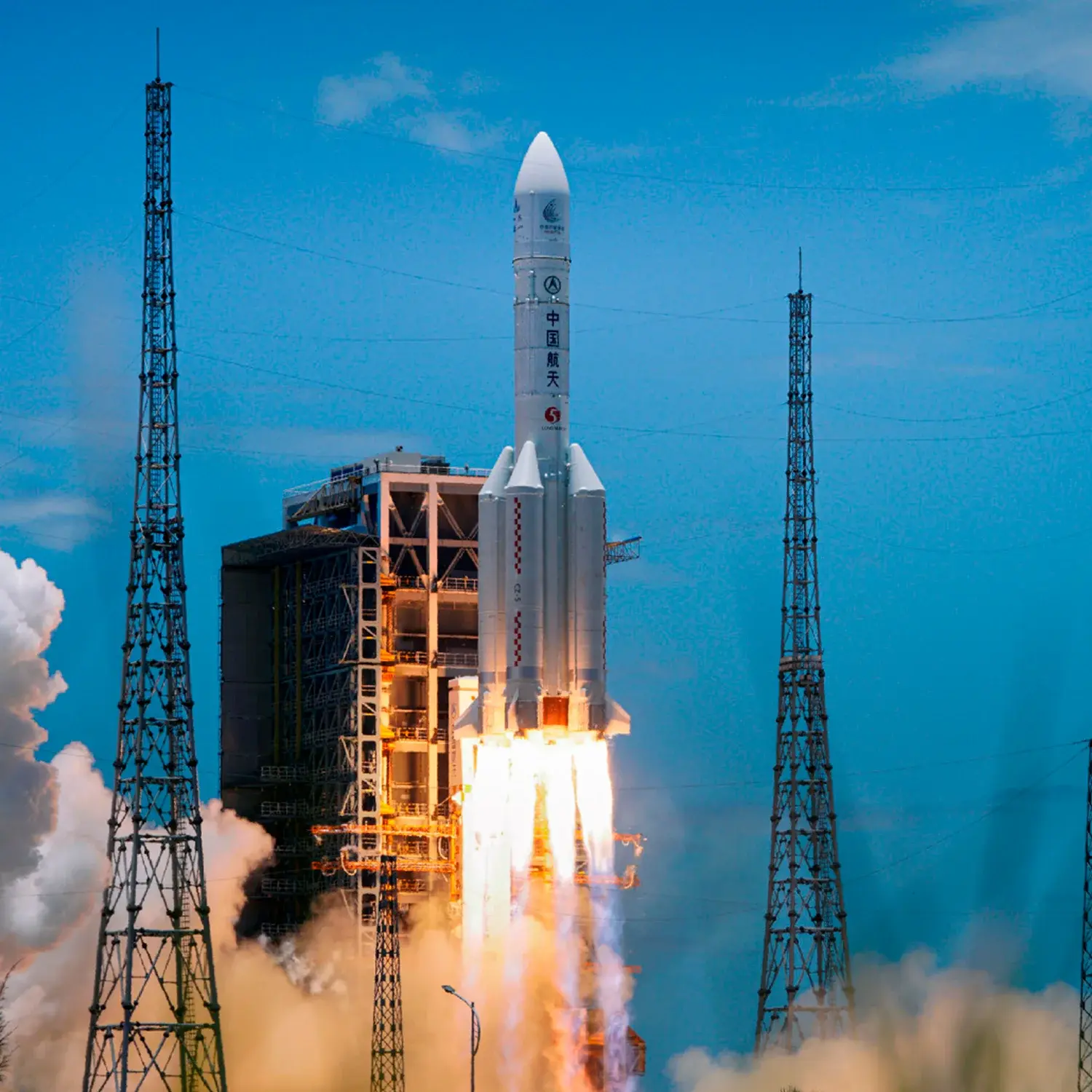/
Tianwen-1
Launch Success
Liftoff Time (GMT)
04:41:15
Thursday July 23, 2020
Watch Replay
Official Livestream
Mission Details
Read Article
Launch Notes
First Chinese Mars and interplanetary mission, first non-Soviet and non-US rover. The first stage burned 6 seconds longer than expected, but the second stage was able to compensate.
Tianwen-1
Tianwen-1 (from Chinese: 天问一号, "celestial questions" in English) is a Martian space probe by the Chinese Space Agency (CNSA) developed and built by CASC, China's leading space industry. The probe consists of an orbiter, a lander, and a rover that will explore the planet's surface. After the failure in 2011 of the joint Sino-Russian Phobos-Grunt mission that carried the small Chinese satellite Yinghuo 1, it was finally decided to conduct the next Chinese mission independently. The successes of the Chang'e lunar exploration programme, in particular the landing system for Chang'e 3 and 4, provide sufficient technology for an ambitious mission. The project is approved in 2016, making it China's first interplanetary probe. The spacecraft with a total weight of nearly 5 tons is one of the heaviest probes ever launched to Mars and carries a total of 13 scientific instruments. The orbiter, which has a lifespan of two years and is responsible for orbital manoeuvres, is equipped with two medium (MoRIC) and high-resolution (HiRIC) cameras, a ground-penetrating radar, an infrared spectrometer, a magnetometer, and two particle detectors. The 240 kg rover has a life span of 3 months and carries a stereoscopic navigation camera (NaTeCam), a multispectral camera, a ground-penetrating radar, a magnetometer, an imaging spectrometer (MarsCoDe), and a weather station. The scientific objectives of the mission focus on the geology of Mars, the present and past presence of water on and beneath its surface, and the interaction of its atmosphere with solar particles. After two months of studying the landing site, the re-entry capsule will detach from the orbiter in April 2021 to perform an atmospheric re-entry, then release the lander to deposit the rover on the planet's surface. The orbiter will serve as a communications relay during the rover's primary mission and then move to a more suitable orbit for observations while maintaining its relay role.
Heliocentric Orbit
1 Payload
4,920 kilograms
Rocket


Agency
CASCRocket
Height: 57m
Payload to Orbit
LEO: 32,000 kg
GTO: 14,000 kg
Liftoff Thrust
10,565 Kilonewtons
Fairing
Diameter: 5.2m
Height: 20m
Stages
3
Strap-ons
4
Launch Site
Stats
Long March 5
4th
Mission
1st
Mission of 2020
2020
55th
Orbital launch attempt